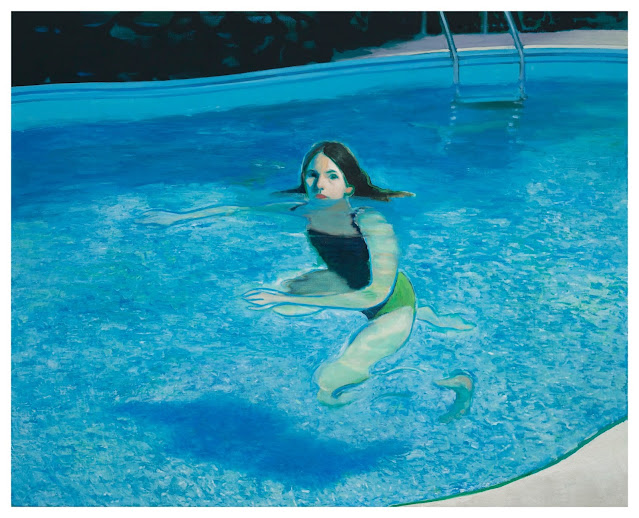He told FAD Magazine:
"My process for each project has been pretty similar for a number of years now. After a period of research and reflection on what it is that I’m trying to address with the work, I choose the location in which to set the paintings. That site is then constructed as a large scale set inside my studio. Actors are cast, costumes sourced and a film shoot is organised so that I can stage the performers or improvise with them in order to build up a body of reference imagery, from which the paintings are then developed.
Two main factors contributed to the origins of this current exhibition, Enclave. The first grew out of a previous body of work called Monument, which was exhibited at Wilkinson Gallery in London in late 2014. The show was a response to a few months I spent in Los Angeles and included a number of paintings of what I viewed as ‘symbolic surfaces’, such as driveways; gates; or a security lit suburban lawn. These paintings alluded to issues of exclusion and access; and also the public and the private.
I subsequently realised that some of my fascination with these parts of LA was because they reminded me so much of areas of the city I grew up in – Lusaka, Zambia. I’ve never been particularly interested in addressing my own biography but I found myself thinking more and more about this connection. The other factor was the growing tragedy of the migrant crisis over the last couple of years, and more specifically the sense of collective amnesia in the UK as to how these issues had reached this point. I realised that depicting elements of my own past could become a way of tangentially dealing with a wider set of issues concerning the west’s relationship to the post-colonial world. The environment seen in the paintings is a set based on my childhood garden in Zambia. It had an open breeze block perimeter wall, a style which was very common at the time. It soon occurred to me this could be a subtle but resonant motif to run throughout the paintings and that the garden itself could act as a metaphorical site."
https://www.jonathanwateridge.net/
























































